Brazilian Jiu Jitsu Self Defense – Techniques and Benefits
Table of Contents
- Introduction
- Historical Background of Brazilian Jiu-Jitsu
- Core Principles of Brazilian Jiu-Jitsu
- Brazilian Jiu-Jitsu Techniques for Self-Defense
- Guard Pulling
- Mount
- Side Control
- Rear Naked Choke
- Armbar
- Kimura
- Benefits of Brazilian Jiu-Jitsu for Self-Defense
- Physical Benefits
- Mental Benefits
- Strategic Benefits
- Brazilian Jiu-Jitsu in Real-Life Self-Defense Scenarios
- Adaptability in Real-Life Scenarios
- Size and Strength Discrepancies
- Ground Control
- Training and Sparring in Brazilian Jiu-Jitsu
- Importance of Live Sparring
- Learning Through Practice and Resistance
- Women and Brazilian Jiu-Jitsu for Self-Defense
- Empowerment Through Technique
- The Guard Position and Its Importance
- Common Misconceptions About Brazilian Jiu-Jitsu
- Misconceptions About Strength and Size
- Sport Jiu-Jitsu vs. Self-Defense Jiu-Jitsu
- Choosing the Right Brazilian Jiu-Jitsu School for Self-Defense
- Factors to Consider
- Importance of Qualified Instructors
- Conclusion
1. Introduction
Brazilian Jiu-Jitsu (BJJ) has gained widespread recognition and popularity as a highly effective martial art, particularly for self-defense. Rooted in the principles of leverage and technique over brute strength, BJJ provides practitioners with the tools to defend themselves against larger and stronger opponents. This blog post explores the various facets of Brazilian Jiu-Jitsu as a self-defense system, highlighting its historical background, core principles, specific techniques, and the numerous benefits it offers to individuals seeking to enhance their personal safety.
2. Historical Background of Brazilian Jiu-Jitsu
The origins of Brazilian Jiu-Jitsu trace back to the early 20th century, when the art was developed in Brazil by the Gracie family. Influenced by Japanese Jiu-Jitsu and Judo, BJJ evolved through the experimentation and adaptation of techniques to suit real-life combat situations. The Gracie brothers—Carlos, Oswaldo, Gastão Jr., George, and Hélio—played pivotal roles in refining the art, focusing on ground fighting and submissions. Hélio Gracie, in particular, emphasized the importance of leverage and technique to overcome physical disadvantages, setting the foundation for what would become a globally recognized martial art. The rise of Mixed Martial Arts (MMA) and the success of BJJ practitioners in early UFC events further propelled BJJ into the spotlight, solidifying its reputation as an effective self-defense system. Brazilian Jiu Jitsu (BJJ) is a martial art and combat sport focusing on ground fighting and submission holds. It emphasizes technique, leverage, and strategic thinking, making it effective for self-defense and competitive grappling. For a comprehensive overview of BJJ, you can check out this article Brazilian Jiu Jitsu.
3. Core Principles of Brazilian Jiu-Jitsu
At the heart of Brazilian Jiu-Jitsu lies the principle of using leverage and technique to control and subdue an opponent. Unlike many other martial arts that rely on striking, BJJ focuses on grappling, submissions, and positional control. This approach allows practitioners to neutralize threats without relying on sheer physical strength. Key principles include weight distribution, balance, and the strategic use of body mechanics. These principles enable practitioners to control their opponents, regardless of size or strength discrepancies, by applying joint locks, chokes, and other submission techniques. Understanding and mastering these core principles is essential for effective self-defense in real-world situations.
4. Brazilian Jiu-Jitsu Techniques for Self-Defense
Brazilian Jiu-Jitsu encompasses a wide array of techniques designed to control and submit opponents. Here, we explore six fundamental techniques that are particularly effective for self-defense:
Guard Pulling
Guard pulling is a fundamental technique in Brazilian Jiu-Jitsu, where the practitioner pulls their opponent towards them, bringing them to the ground, and wraps their legs around the opponent’s waist. This position, known as the guard, allows the practitioner to control the opponent’s movements and prevents them from striking effectively. In a self-defense scenario, guard pulling can quickly neutralize an aggressor by forcing them into a controlled position on the ground.
Mount
The mount position is a dominant technique in BJJ, where the practitioner sits on top of their opponent’s chest, immobilizing their arms and legs. This position allows the practitioner to strike, apply submissions, or maintain control until help arrives. The mount position is effective for self-defense because it enables the practitioner to maintain a superior position, limiting the opponent’s ability to fight back or escape.
Side Control
Side control is another dominant position in BJJ, where the practitioner faces their opponent perpendicularly, typically chest to chest, while hovering above their legs. This position allows for strikes, transitions to other submissions, and control of the opponent’s movements. Side control is effective in self-defense situations because it provides the practitioner with multiple options to neutralize the threat while maintaining a secure position.
Rear Naked Choke
The rear naked choke is a highly effective submission technique in BJJ. It involves wrapping an arm around the opponent’s neck from behind, applying pressure to the carotid arteries, and causing the opponent to lose consciousness. This technique can quickly incapacitate an attacker without causing permanent damage, making it an ideal self-defense move.
Armbar
The armbar is a classic submission technique in BJJ that involves hyperextending the opponent’s arm by applying pressure to the elbow joint. This technique forces the opponent to tap out or risk severe injury. In a self-defense scenario, the armbar can quickly disable an attacker by targeting their arm, preventing them from continuing the assault.
Kimura
The Kimura is a versatile joint lock technique in BJJ that targets the opponent’s shoulder joint. By controlling the opponent’s wrist and driving their arm behind their back, the practitioner can force the opponent to submit. The Kimura is effective for self-defense because it can be applied from various positions and provides a powerful means of controlling and neutralizing an attacker. Additionally, for insights into the theoretical and technical aspects of BJJ, this article on Brazilian Jiu Jitsu theory and technique is very informative.
5. Benefits of Brazilian Jiu-Jitsu for Self-Defense
Brazilian Jiu-Jitsu offers numerous benefits for individuals seeking to enhance their self-defense capabilities. These benefits extend beyond physical techniques, encompassing mental resilience, strategic thinking, and overall well-being. For those considering starting classes, information on pricing can be found here: How much are Brazilian Jiu Jitsu classes.
Physical Benefits
Practicing BJJ provides a full-body workout, improving strength, endurance, flexibility, and coordination. The rigorous training involved in mastering techniques ensures that practitioners develop a high level of physical fitness, which is essential for effective self-defense. Additionally, BJJ training enhances cardiovascular health, muscle tone, and overall body composition, contributing to a stronger and more agile physique.
Mental Benefits
BJJ is not only a physical discipline but also a mental one. Practitioners develop a calm and focused mindset, crucial for handling high-stress situations. The strategic nature of BJJ requires quick thinking, problem-solving, and adaptability, which are valuable skills in self-defense scenarios. Regular training also fosters discipline, confidence, and perseverance, contributing to mental resilience and emotional well-being.
Strategic Benefits
One of the key advantages of BJJ for self-defense is its emphasis on technique and leverage over brute strength. This approach allows individuals of all sizes and strengths to defend themselves effectively. BJJ teaches practitioners to use their opponent’s energy against them, capitalize on vulnerabilities, and maintain control in chaotic situations. These strategic principles are invaluable in real-life self-defense scenarios, where the ability to think and act quickly can make all the difference.
6. Brazilian Jiu-Jitsu in Real-Life Self-Defense Scenarios
Brazilian Jiu-Jitsu is particularly effective in real-life self-defense scenarios due to its adaptability, focus on leverage, and emphasis on ground control.
Adaptability in Real-Life Scenarios
Unlike martial arts that focus solely on striking or stand-up techniques, BJJ thrives in the unpredictable chaos of real-life altercations. Its core principles involve using an opponent’s energy against them and capitalizing on vulnerabilities, making it a practical choice for self-defense situations where the terrain and circumstances are dynamic.
Size and Strength Discrepancies
One of the key tenets of BJJ is leverage. By understanding the principles of weight distribution and balance, a smaller, seemingly weaker individual can overcome a larger, more powerful assailant. This aspect is particularly empowering for individuals who may not rely on sheer strength, making BJJ a valuable tool for people of all sizes.
Ground Control
BJJ excels in ground fighting, an often-neglected aspect of self-defense. Statistics show that many altercations end up on the ground, where traditional striking arts may falter. The ability to control and submit an opponent on the ground ensures that a BJJ practitioner is well-equipped to handle real-world scenarios effectively.
7. Training and Sparring in Brazilian Jiu-Jitsu
The training methods in Brazilian Jiu-Jitsu play a crucial role in its effectiveness as a self-defense system. A key component of BJJ training is live sparring, which allows practitioners to apply techniques against resisting opponents in a controlled environment. To delve deeper into training methods, visit Brazilian Jiu Jitsu training.
Importance of Live Sparring
Live sparring, or rolling, is an integral part of BJJ training. It involves practicing techniques against a fully resisting opponent, simulating real-life combat scenarios. This hands-on experience is essential for developing the skills needed for effective self-defense. Through live sparring, practitioners learn to apply techniques under pressure, adapt to changing situations, and develop the timing and precision required to neutralize threats.
Learning Through Practice and Resistance
In BJJ, techniques are drilled repeatedly to ensure muscle memory and proficiency. Practitioners engage in positional sparring, where they focus on specific techniques and positions, gradually increasing resistance as they become more skilled. This method of learning through practice and resistance builds confidence, resilience, and a deep understanding of the art, making practitioners well-prepared for self-defense situations.
8. Women and Brazilian Jiu-Jitsu for Self-Defense
Brazilian Jiu-Jitsu is particularly empowering for women seeking to enhance their self-defense skills. The principles and techniques of BJJ are especially well-suited to women, offering them the means to defend themselves effectively against larger and stronger assailants.
Empowerment Through Technique
One of the key aspects of Brazilian Jiu-Jitsu that makes it ideal for women is its emphasis on technique over strength. BJJ techniques rely on leverage and body mechanics rather than sheer force, allowing individuals to overcome size and strength disadvantages. For women, who may face physical challenges in confrontational situations, mastering BJJ techniques can provide a sense of empowerment and confidence.
The Guard Position and Its Importance
The guard position, a fundamental aspect of BJJ, is particularly advantageous for women in self-defense scenarios. By utilizing the guard, a practitioner can control an opponent’s movements while remaining in a defensive position. This allows women to use their lower body strength effectively, potentially neutralizing a larger attacker. Additionally, the guard position provides opportunities for submissions and escapes, giving women multiple options for self-defense.
9. Common Misconceptions About Brazilian Jiu-Jitsu
Despite its effectiveness as a self-defense system, Brazilian Jiu-Jitsu is often misunderstood. Common misconceptions about BJJ can prevent individuals from recognizing its value in real-world situations.
Misconceptions About Strength and Size
One of the most prevalent misconceptions about Brazilian Jiu-Jitsu is that it requires significant physical strength and size to be effective. In reality, BJJ techniques are designed to leverage an opponent’s energy and body weight, allowing practitioners to control and subdue larger opponents through proper technique and leverage. This makes BJJ accessible to individuals of all sizes and fitness levels, debunking the notion that strength and size are prerequisites for self-defense.
Sport Jiu-Jitsu vs. Self-Defense Jiu-Jitsu
Another common misconception is the belief that sport Jiu-Jitsu techniques are not applicable to real-life self-defense situations. While it’s true that sport Jiu-Jitsu may emphasize certain techniques or strategies that are specific to competition, the fundamentals of BJJ remain the same. Techniques such as guard pulling, mount control, and submissions are equally effective in both sport and self-defense contexts, making BJJ a versatile martial art for personal protection.
10. Choosing the Right Brazilian Jiu-Jitsu School for Self-Defense
When seeking to learn Brazilian Jiu-Jitsu for self-defense, it’s essential to choose the right training environment and instructor. Several factors should be considered when selecting a BJJ school. If you’re interested in finding the best schools to train at, explore this guide on top Brazilian Jiu Jitsu schools.
Factors to Consider
- Instructor Credentials: Look for instructors with reputable certifications and extensive experience in BJJ, particularly in self-defense applications.
- Class Structure: Ensure that the school offers classes specifically focused on self-defense techniques and scenarios, in addition to sport-oriented classes.
- Training Atmosphere: Visit the school and observe a class to assess the training atmosphere, instructor-student interactions, and overall culture.
- Safety Measures: Inquire about safety protocols during training, including the use of protective equipment and guidelines for sparring.
- Community Support: Consider the camaraderie and supportiveness of the BJJ community at the school, as a supportive training environment can enhance learning and skill development.
Importance of Qualified Instructors
The quality of instruction plays a significant role in the effectiveness of Brazilian Jiu-Jitsu training for self-defense. Look for instructors who prioritize safety, emphasize technique over strength, and create a positive learning environment for all students. Qualified instructors will have the expertise to teach practical self-defense techniques tailored to individual abilities and circumstances, ensuring that students develop the skills and confidence needed to protect themselves effectively.
11. Conclusion
Brazilian Jiu-Jitsu stands out as a comprehensive and effective self-defense system, offering practitioners the tools to defend themselves in real-world situations. With its emphasis on technique, leverage, and adaptability, BJJ provides individuals of all sizes and backgrounds with the means to neutralize threats and stay safe. By mastering the core principles and techniques of BJJ, practitioners can develop not only physical prowess but also mental resilience and strategic thinking—qualities that are invaluable in navigating the unpredictable nature of self-defense scenarios. As the popularity of Brazilian Jiu-Jitsu continues to grow, more people are recognizing its potential to empower individuals and enhance personal safety. Whether for fitness, competition, or self-defense, Brazilian Jiu-Jitsu offers a path to mastery that can transform lives and instill confidence in facing life’s challenges.
Frequently Asked Questions (FAQs) about Brazilian Jiu-Jitsu for Self-Defense
Q1. Is Brazilian Jiu-Jitsu suitable for beginners?
A: Yes, Brazilian Jiu-Jitsu (BJJ) is beginner-friendly and can be learned by individuals with no prior martial arts experience. BJJ schools typically offer classes tailored to beginners, focusing on fundamental techniques and concepts.
Q2. How long does it take to become proficient in BJJ for self-defense?
A: The time it takes to become proficient in BJJ varies depending on factors such as individual aptitude, frequency of training, and dedication. With consistent training, students can expect to develop basic self-defense skills within a few months to a year. However, mastery of BJJ is an ongoing journey that requires continued practice and refinement.
Q3. Can Brazilian Jiu-Jitsu be used effectively against larger and stronger opponents?
A: Yes, Brazilian Jiu-Jitsu techniques are designed to leverage an opponent’s energy and body weight, making them effective against larger and stronger adversaries. By focusing on technique, leverage, and ground fighting, BJJ allows practitioners to control and subdue opponents regardless of size differentials.
Q4. Is Brazilian Jiu-Jitsu safe for practitioners?
A: When practiced under the guidance of qualified instructors and in a controlled environment, Brazilian Jiu-Jitsu is generally safe for practitioners. Safety measures such as proper warm-ups, drilling, and supervised sparring help minimize the risk of injury. Additionally, practitioners are encouraged to communicate any concerns or limitations to their instructors to ensure a safe training experience.
Q5. Can women benefit from learning Brazilian Jiu-Jitsu for self-defense?
A: Yes, Brazilian Jiu-Jitsu is highly beneficial for women seeking to enhance their self-defense skills. The principles and techniques of BJJ emphasize leverage, technique, and adaptability, making it an effective means of self-defense for individuals of all genders. By learning BJJ, women can develop confidence, empowerment, and the ability to protect themselves in real-world situations.
Q6. How do I find the right Brazilian Jiu-Jitsu school for self-defense training?
A: To find the right Brazilian Jiu-Jitsu school for self-defense training, consider factors such as instructor credentials, class structure, training atmosphere, safety measures, and community support. Look for schools with experienced instructors who prioritize safety and offer classes focused on practical self-defense techniques. Visiting the school and observing a class can help you assess the training environment and determine if it aligns with your goals and preferences.
Q7. Are there any age restrictions for learning Brazilian Jiu-Jitsu for self-defense?
A: No, Brazilian Jiu-Jitsu is suitable for individuals of all ages, from children to seniors. Many BJJ academies offer classes tailored to specific age groups, ensuring that practitioners receive appropriate instruction and support based on their developmental stage and physical capabilities.
Q8. Can Brazilian Jiu-Jitsu be applied in real-life self-defense situations?
A: Yes, Brazilian Jiu-Jitsu techniques are applicable in real-life self-defense situations. BJJ emphasizes practical techniques for controlling and neutralizing opponents, making it effective for self-defense scenarios both on the street and in other environments. By learning BJJ, practitioners gain the skills and confidence to protect themselves and others in challenging situations.
Q9. Is Brazilian Jiu-Jitsu primarily focused on ground fighting?
A: While Brazilian Jiu-Jitsu places a strong emphasis on ground fighting, it also incorporates techniques for standing combat, takedowns, and transitions between positions. BJJ practitioners learn to adapt their skills to various situations, including both standing and ground scenarios, ensuring a comprehensive approach to self-defense.
Q10. How can Brazilian Jiu-Jitsu benefit mental health and well-being?
A: In addition to its physical benefits, Brazilian Jiu-Jitsu can positively impact mental health and well-being. Training in BJJ promotes discipline, focus, resilience, and stress relief. The supportive community atmosphere of BJJ academies fosters camaraderie and personal growth, contributing to overall mental and emotional well-being.
Q11. Can Brazilian Jiu-Jitsu help with self-confidence and assertiveness?
A: Yes, Brazilian Jiu-Jitsu can help individuals develop self-confidence and assertiveness. Through progressive skill development and overcoming challenges on the mat, practitioners build confidence in their abilities and decision-making. The practical self-defense skills learned in BJJ empower individuals to assert themselves in various situations, both on and off the mat.
Q12. Is Brazilian Jiu-Jitsu effective against multiple attackers?
A: While Brazilian Jiu-Jitsu is highly effective in one-on-one situations, managing multiple attackers can present significant challenges. However, the principles of leverage, control, and situational awareness learned in BJJ can still be valuable in such scenarios, allowing practitioners to minimize risk and create opportunities for escape or assistance.

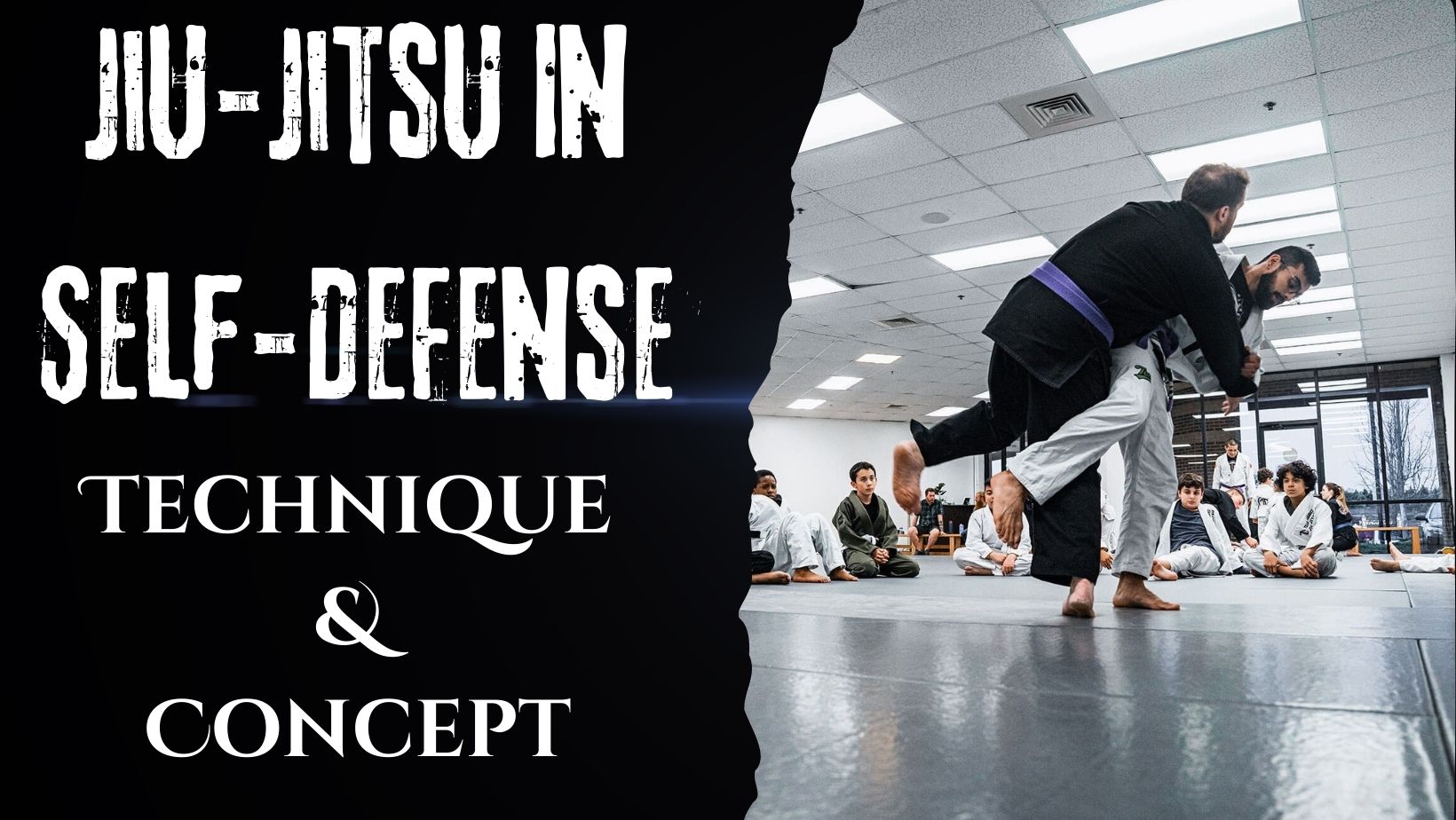


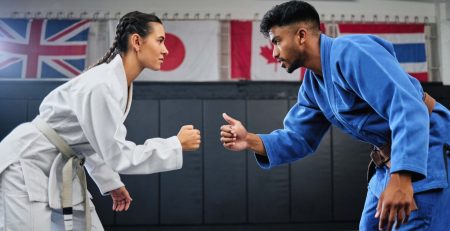


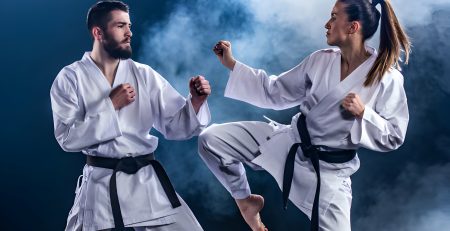
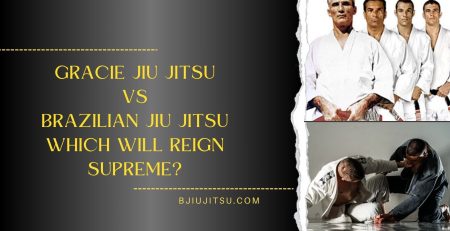


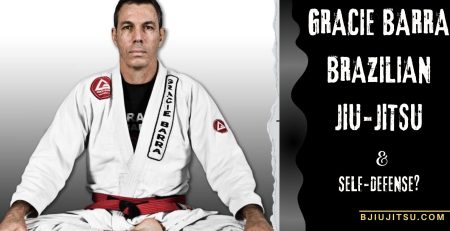



Leave a Reply
You must be logged in to post a comment.